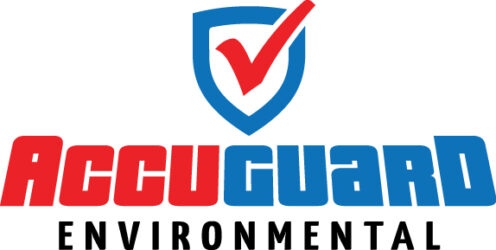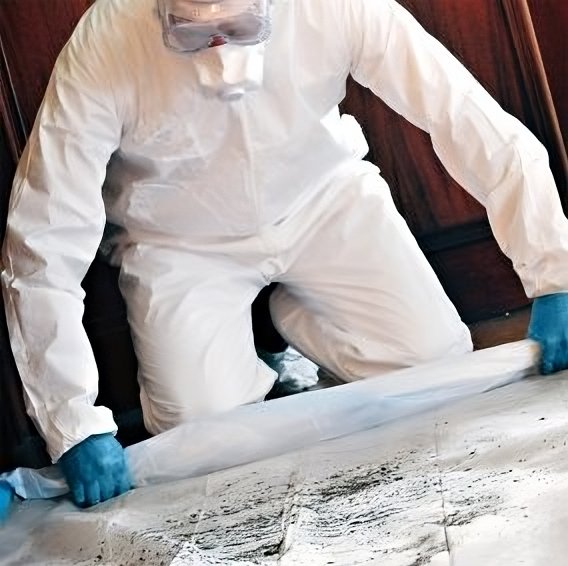Fire-damaged buildings present unique challenges when it comes to restoration and safety. One often overlooked, yet critical, concern is the presence of lead. Structures built before 1978 are particularly susceptible, as lead-based paint and other materials were widely used during this time. When these materials are exposed to extreme heat during a fire, they can release toxic lead particles into the air, soil, and surrounding surfaces. Understanding how to test for lead effectively in fire-damaged buildings is key to protecting health, ensuring safety, and meeting regulatory requirements.
Why Testing for Lead is Essential in Fire-Damaged Structures
After a fire, it’s tempting to focus solely on visible structural damage. However, the potential for lead contamination significantly raises the stakes for restorers and property owners alike. Here’s why lead testing should be a priority:
- Health Risks
Exposure to lead is toxic, especially for children and pregnant women. It can cause neurological damage, learning disabilities, kidney issues, and developmental delays. Fire events are particularly hazardous because the elevated temperatures can volatilize lead, allowing it to be inhaled or deposited on surfaces where it can be ingested. - Contamination Spread
Lead dust and particles released during a fire can infiltrate areas beyond the immediate damage zone. This risk is especially high when firefighting efforts disperse debris or when damaged materials are moved during cleanup. - Regulatory Compliance
Federal and Oregon state laws require proper identification and handling of lead materials during restoration. OSHA, EPA, and HUD all have strict guidelines on lead testing, disposal, and abatement.
Given these risks, testing for lead isn’t just a precaution—it’s a necessity for protecting health and ensuring compliance with industry standards.
Tools and Techniques for Lead Testing
Evaluating lead contamination after a fire requires specialized tools and methods to accurately identify the presence and concentration of lead in both materials and the surrounding environment. Below are the most commonly used techniques:
- X-Ray Fluorescence (XRF) Analyzer
XRF devices are portable tools that provide immediate, non-destructive results. They are used to detect lead in building materials like paint, soil, and roofing. This makes them ideal for larger properties that require extensive testing. - Laboratory Analysis
For precise measurements, samples of debris, soil, paint, or air can be collected and sent to a laboratory certified by the EPA’s National Lead Laboratory Accreditation Program (NLLAP). Labs use techniques such as atomic absorption spectrometry, which provides detailed data on lead concentration. - Dust Wipe Testing
Dust samples are gathered using moistened wipes to assess contamination in specific areas, especially on horizontal surfaces like floors or window sills. These samples are then analyzed in a laboratory. - Air Sampling
Post-fire environments often have airborne particles that could contain lead. High-volume samplers and filters are used to collect air samples, which are tested in a lab for particulate lead levels. - Paint Chip Sampling
This method involves removing a portion of paint from an affected surface and sending it to a lab for examination. While it’s a destructive test, it’s sometimes the most reliable option for determining lead content in suspected areas.
Steps to Testing Lead in Fire-Damaged Buildings
To ensure accurate results and a safe environment during testing, restorers should follow these steps:
1. Conduct a Visual Survey
Begin with a thorough inspection of the property to identify areas where lead-based materials were likely present, such as old painted surfaces, pipes, or metal fixtures.
2. Secure the Contaminated Area
Reduce the risk of spreading hazardous particles by sealing off affected zones with protective barriers. Use equipment like HEPA filters to minimize airborne contaminants.
3. Choose the Right Testing Method
Select a testing technique based on the circumstances. XRF is often the fastest for initial assessments, while lab analysis is recommended for comprehensive data.
4. Collect Samples Strategically
If using lab testing, gather samples from multiple locations, including floors, walls, air, and soil around the building’s exterior. Be sure to wear appropriate personal protective equipment (PPE) during the process.
5. Consult with Professionals
Certified lead experts or environmental specialists should oversee the testing to ensure accuracy, adherence to regulations, and proper documentation. DIY testing kits may suffice in minor cases, but professional assessments are strongly recommended for fire-damaged sites.
6. Analyze and Plan for Mitigation
Once testing results are in, consult with abatement professionals to develop a mitigation plan. Depending on the severity, this may involve encapsulating lead materials, replacing contaminated surfaces, or other removal strategies.
Best Practices for Accurate Lead Testing
Testing fire-damaged buildings for lead requires precision and adherence to safety protocols. Here are some best practices to keep in mind:
- Use Certified Professionals
Hire inspectors who hold certifications like EPA’s Lead-Based Paint Inspector or Risk Assessor license. - Follow Industry Standards
Ensure all tests align with OSHA, EPA, and HUD guidelines for lead management in fire-damaged structures. - Prioritize Safety
Wear PPE such as respirators, gloves, and coveralls to prevent personal exposure when collecting samples. - Document Everything
Maintain detailed records of your testing procedures and results. These may be necessary for regulatory compliance and insurance claims. - Re-Test After Cleanup
Once abatement is complete, conduct follow-up testing to confirm contaminated materials were managed effectively.
Partner with AccuGuard Environmental for Expert Testing and Guidance
At AccuGuard Environmental, we understand the complexities of lead contamination in fire-damaged properties. With state-of-the-art equipment, certified expertise, and a commitment to safety, we provide accurate lead testing and remediation planning to help you restore properties with confidence.
If you need professional lead testing services or have questions about managing fire-damaged buildings, reach out to AccuGuard Environmental today. Protect your property—and the people within it—by taking proactive steps against hidden lead hazards.

